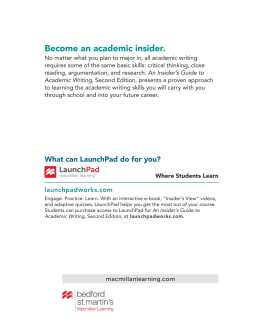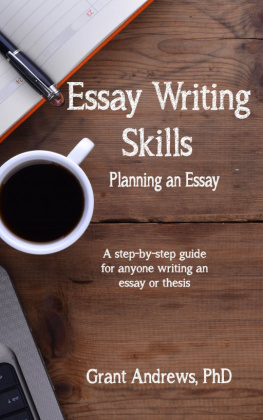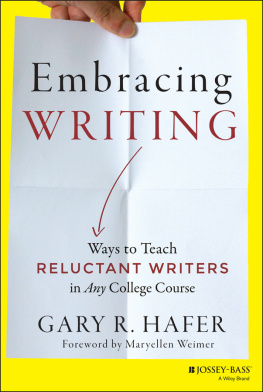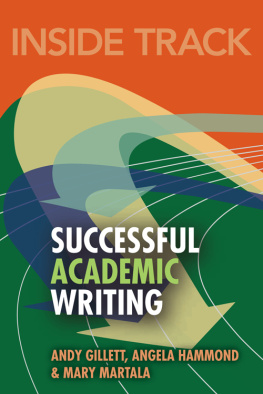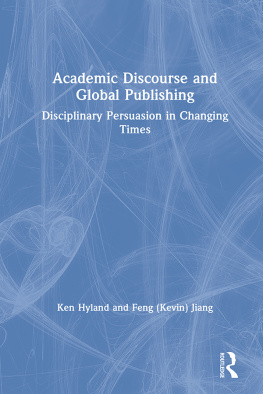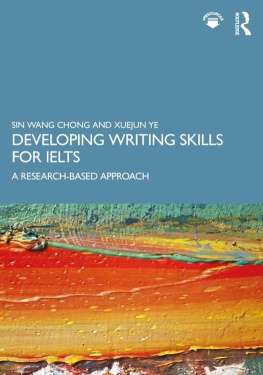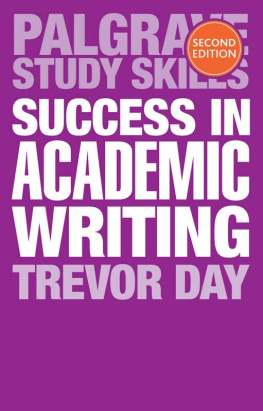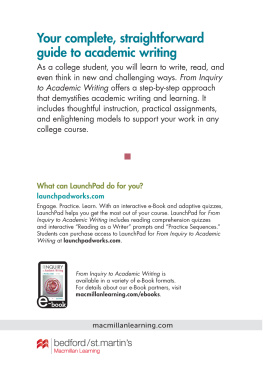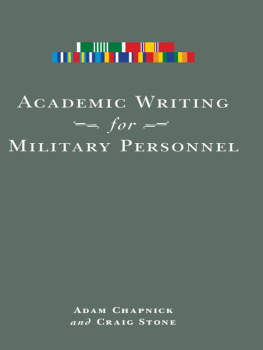Contents
Landmarks
List of Figures
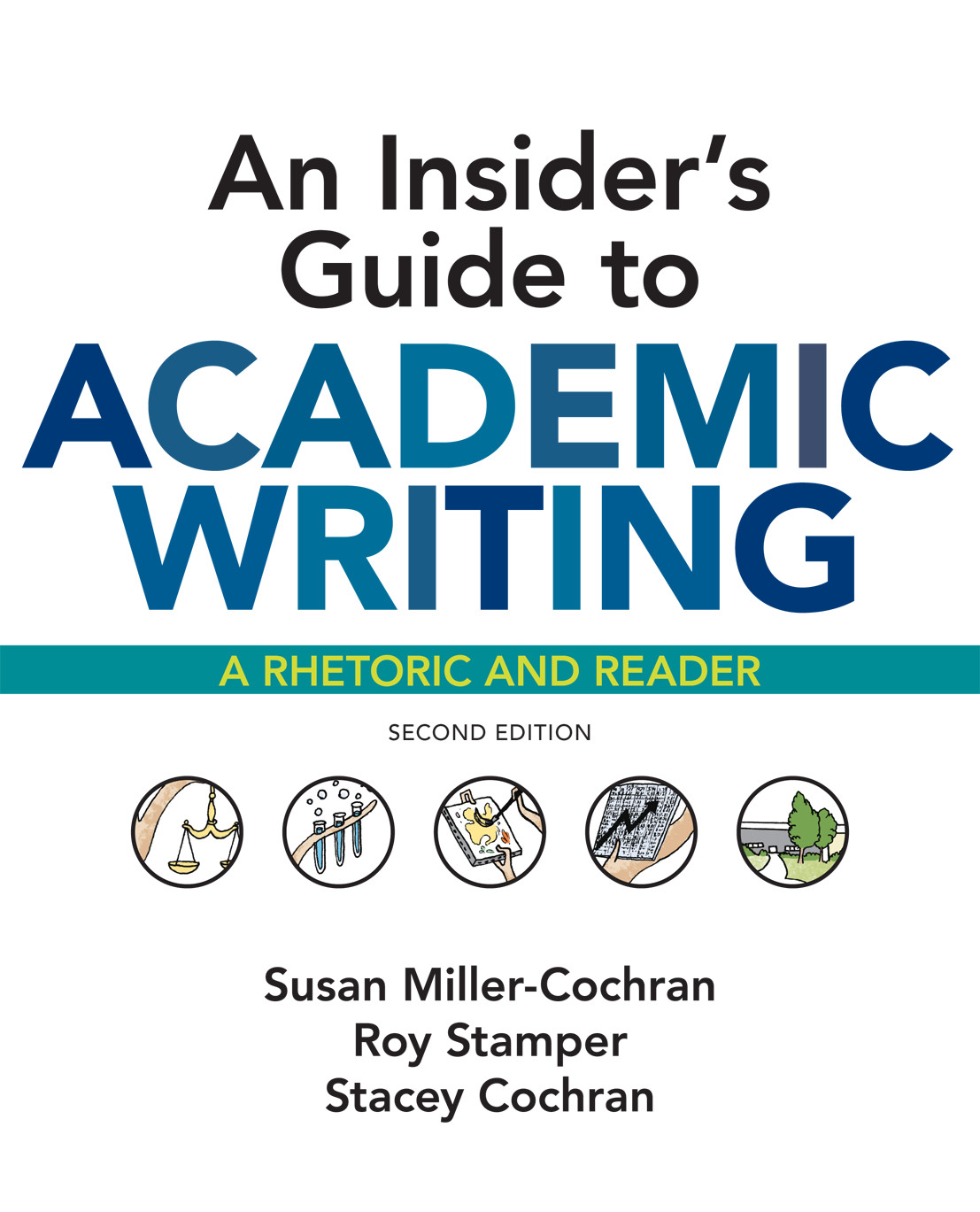
Brief Contents
SECOND EDITION
An Insiders Guide to Academic Writing
A Rhetoric and Reader
Susan Miller-Cochran
University of Arizona
Roy Stamper
North Carolina State University
Stacey Cochran
University of Arizona

For Bedford/St. Martins
Vice President, Editorial, Macmillan Learning Humanities: Edwin Hill
Executive Program Director for English: Leasa Burton
Senior Program Manager: Laura Arcari
Marketing Manager: Vivian Garcia
Director of Content Development: Jane Knetzger
Developmental Editor: Sherry Mooney
Senior Content Project Manager: Ryan Sullivan
Workflow Project Manager: Lisa McDowell
Production Supervisor: Robert Cherry
Associate Media Project Manager: Emily Brower
Media Editor: Julia Domenicucci
Editorial Services: Lumina Datamatics, Inc.
Composition: Lumina Datamatics, Inc.
Text Permissions Manager: Kalina Ingham
Text Permissions Researcher: Arthur Johnson, Lumina Datamatics, Inc.
Photo Permissions Editor: Angela Boehler
Photo Researcher: Candice Cheesman, Lumina Datamatics, Inc.
Director of Design, Content Management: Diana Blume
Text Design: Claire Seng-Niemoeller
Cover Design: William Boardman
Cover Art: Andrea Tsurumi
Copyright 2019, 2016 by Bedford/St. Martins.
All rights reserved. No part of this book may be reproduced, stored in a retrieval system, or transmitted in any form or by any means, electronic, mechanical, photocopying, recording, or otherwise, except as may be permitted by law or expressly permitted in writing by the Publisher.
1 2 3 4 5 6 23 22 21 20 19 18
For information, write: Bedford/St. Martins, 75 Arlington Street, Boston, MA 02116
ISBN 978-1-319-22806-4
Acknowledgments
Text acknowledgments and copyrights appear at the back of the book on , which constitute an extension of the copyright page. Art acknowledgments and copyrights appear on the same page as the art selections they cover.
Preface for Instructors
What is an insider? In all walks of life, insiders are the ones who know the territory, speak the language, have the skills, understand the codes, keep the secrets. With the second edition of An Insiders Guide to Academic Writing, we want to build on the success of the first edition and continue to help college students, new to the world of higher education, to learn the territory, language, skills, codes, and secrets of academic writing in disciplinary contexts. While no single book, or course, or teacher could train all students in all the details of scholarly writing in all disciplines, An Insiders Guide offers a flexible, rhetoric-based pedagogy that has helped our students, and students across the country, to navigate the reading and writing expectations of academic discourse communities across the curriculum. We have found that because the pedagogy is grounded in rhetorical principles and concepts, writing instructors who might otherwise be wary of teaching outside their scholarly expertise feel confident about the approach. Moreover, students quickly grasp the transferable benefits of the approach to their future courses, so their level of enthusiasm and personal investment is high. With this new edition, we are celebrating the success of this book in achieving its goal of bringing students into the academic fold, as it was adopted at more than seventy schools, spanning four-year and two-year institutions. We are also fine-tuning that approach based on feedback from the students and instructors who have trusted us to support their efforts. New to the second edition is additional foundational support on the writing process, critical reading, and reflection, to give students the tools they need to be confident writers in any discipline.
As a unique enhancement to its rhetoric-based pedagogy, An Insiders Guide to Academic Writing integrates, through video and print interviews, the writing advice of scholars and undergraduates from many disciplines; they speak from and about their own experiences as academic writers. (We conducted, filmed, and curated the interviews ourselves, and they are available as part of the LaunchPad package with the book.) Whether professor or student, these credible and compelling experts humanize and demystify disciplinary discourse, sharing their insider knowledge with academic novices.
An Insiders Guide to Academic Writing derives from the research and teaching that went into transitioning the first-year writing program at North Carolina State University to a writing-in-the-disciplines (WID) approach. This approach is gaining wider currency nationwide as calls for instruction in transferable college writing skills increase. At that time, more than a decade ago, faculty in the program (including the authors of this book) immersed themselves in scholarship on WID and WID pedagogy. We also began to seek supporting instructional materials, but did not find any existing textbooks that met our needs. While several texts focused, to varying degrees, on introducing students to writing in the academic disciplines, few texts employed a rhetorical approach to explore these kinds of writing. Fewer still employed a rhetorical approach to understanding the conventions of writing that characterize those disciplinary texts while also providing support for students own production of disciplinary genres.
The book that emerged from these years of teaching and research, An Insiders Guide to Academic Writing, is a composition rhetoric with readings that distills much of the writing-in-the-disciplines approach that we and our colleagues have used with success for many years. This approach begins by applying rhetorical principles to the understanding of texts, and then shows those principles at work in various domains of academic inquiry, including the humanities, the social sciences, the natural sciences, and the applied fields. It does so mainly by (1) introducing students to rhetorical lenses through which they can view the genres and conventions they will be expected to read and produce in other courses, (2) providing examples of those genres and conventions to analyze and discuss, and (3) including carefully scaffolded writing activities and projects designed to help students explore and guide their production of those genres.
We believe that composition programs pursuing a WID-oriented approach to academic writing will find that An Insiders Guide provides a foundation of instruction in disciplinary thinking and writing that is flexible enough to accommodate the diverse teaching interests of individual instructors. Some faculty, for instance, use this approach to support themed courses; they examine how a particular topic or issue is explored by scholars across a range of disciplines. Other faculty situate principles of argument at the center of their course designs and explore disciplinary perspectives and writing in light of those principles. Still others organize their courses as step-by-step journeys through academic domains while attending to the similarities and distinctions in writing practices (rhetorical conventions and genres) of various fields.

